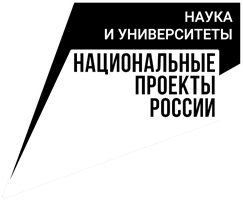PROGRAM
11:00 (GMT+3)
| Zhifei Zhang | School of Mathematical Sciences, Peking University, China |
|
Bio: Zhifei Zhang received his PhD from Zhejiang university in 2003. Then he spent 2 years in Mathematics Institute of AMSS as a Postdoc. He joined Peking university in 2005. His research interest is in the mathematical problems in the fluid mechanics such as the well-posedness of the Navier-Stokes equations, free boundary problem, hydrodynamic stability. |
|
Linear stability of pipe Poiseuille flow at high Reynolds number regime
The linear stability of pipe Poiseuille flow is a long standing problem since Reynolds experiment in 1883. Joint with Qi Chen and Dongyi Wei, we solve this problem at high Reynolds regime. We first introduce a new formulation for the linearized 3-D Navier-Stokes equations around this flow. Then we establish the resolvent estimates of this new system under favorable artificial boundary conditions. Finally, we solve the original system by constructing a boundary layer corrector.
12:00 (GMT+3)
| Vladimir E. Nazaikinskii | Ishlinsky Institute for Problems in Mechanics RAS |
|
Bio: Vladimir Nazaikinskii received PhD degree from Moscow Institute of Electronic Engineering in 1981 and DSc degree from Steklov Mathematical Institute of RAS in 2014 and was elected Corresponding Member of RAS in 2016. He works at Ishlinsky Institue for Problems in Mechanics of RAS as a principal researcher. Research interests: asymptotic methods in the theory of differential equations and mathematical physics; asymptotic methods in the statistics of many-particle systems and relations to number theory; C*-algebras and noncommutative geometry; elliptic theory and index theory |
|
Partial spectral flow and the Aharonov–Bohm effect in graphene.
We study the Aharonov–Bohm effect in an open-ended tube made of a graphene sheet whose dimensions are much larger than the interatomic distance in graphene. An external magnetic field vanishes on and in the vicinity of the graphene sheet, and its flux through the tube is adiabatically switched on. It is shown that, in the process, the energy levels of the tight-binding Hamiltonian of π-electrons unavoidably cross the Fermi level, which results in the creation of electron–hole pairs. The number of pairs is proven to be equal to the number of magnetic flux quanta of the external field. The proof is based on the new notion of partial spectral flow, which generalizes the ordinary spectral flow introduced by Atiyah, Patodi, and Singer and already having well-known applications (such as the Kopnin forces in superconductors and superfluids) in condensed matter physics.
The workshop session will take place in the form of a webinar on the Zoom platform.
Pre-registration for the event is not required.
To join Zoom meeting(You can join in the meeting without a phone number):
https://zoom.com.cn/j/64523635960?pwd=dVo4eWdQeW90MThXd0NWZk1HdVBoUT09
Meeting ID : 645 2363 5960
Password:714716
Instructions for installing and using the Zoom platform are available here:
https://support.zoom.us/hc/ru/articles/201362033-Начало-работы-на-ПК-и-Mac

